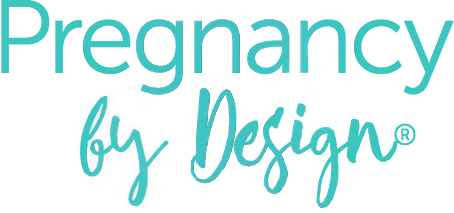Childbirth is one of the most transformative moments in a woman’s life. The human body is designed to go through labor with the help of hormones, and one of the most important hormones is oxytocin. Often called the “love hormone,” oxytocin helps start labor, supports birth, and helps with bonding after delivery. Learning about how oxytocin works can help expectant mothers feel more confident in their body and the natural birth process.
What is Oxytocin?
Oxytocin is a hormone made in the brain (in the hypothalamus) and released by the pituitary gland. It is known for helping people bond, feel close to others, and act in caring ways. Oxytocin influences the autonomic nervous system (ANS), which controls things like heart rate and digestion. It helps balance the two main parts of the ANS: one that prepares the body to react in stressful situations (“fight or flight”) and one that helps the body relax and recover (“rest and digest”). Oxytocin levels go up during hugging, breastfeeding, and especially childbirth. It’s called the “love hormone” because it helps build trust and connection—especially between a mother and her baby. Studies also show that oxytocin helps reduce stress and supports good mental health.
Oxytocin’s Role in Childbirth
Oxytocin plays a big role in every part of labor, from starting contractions to helping with recovery and bonding afterward. Here are some of the ways oxytocin helps in childbirth.
1. Starts Labor
Near the end of pregnancy, the body makes more oxytocin. This hormone tells the uterus (specifically the uterine muscle) to start contracting, which begins labor. These contractions help open the cervix so the baby can be born. As labor continues, contractions release even more oxytocin, which keeps labor moving.
Things like nipple stimulation can increase oxytocin and help start contractions naturally. That’s why some women feel contractions while breastfeeding late in pregnancy.
But when labor is started using synthetic oxytocin (called Pitocin), it changes the body’s natural rhythm. Natural oxytocin is released in short bursts (called oxytocin pulses), but Pitocin is given through a steady IV drip, causing stronger and more constant contractions. This can also lower the body’s own release of oxytocin.
2. Makes Contractions Stronger and More Regular
Oxytocin helps regulate uterine contractions and move the baby through the birth canal. Unlike Pitocin, which causes hard and constant contractions, natural oxytocin works in a gentle rhythm. This helps labor feel more manageable.
Oxytocin also helps reduce pain by encouraging the release of endorphins—your body’s natural painkillers. Higher levels of oxytocin make labor feel more calm and positive.
3. Helps Labor Go Smoothly with Fewer Medical Interventions
When oxytocin levels in the blood (called plasma oxytocin levels) are high, labor often goes more smoothly. A calm and loving setting—like dim lights, gentle touch, and support from a partner or doula—can help the body release more oxytocin.
Stress and fear can block oxytocin. The hormone adrenaline, which comes from fear, stops oxytocin from working well. This can slow down labor and lead to more medical intervention, like epidurals or cesarean sections. A peaceful environment can help oxytocin do its job.
4. Prevents Heavy Bleeding After Birth
After the baby is born, oxytocin continues to help by making the uterus contract again. This helps push out the placenta and stops too much bleeding. Without strong contractions, there’s a risk of postpartum hemorrhage, which can be dangerous.
5. Helps With Bonding and Breastfeeding
Oxytocin helps moms and babies bond right after birth. It surges during skin-to-skin contact, eye contact, and breastfeeding. This helps create a strong emotional connection.
Oxytocin also helps breastfeeding by triggering the “let-down reflex,” which moves milk from the breast to the nipple. Breastfeeding often helps keep oxytocin levels high, which supports bonding and milk flow. It also supports maternal care and emotional strength.
In La Leche League’s guide to breastfeeding, The Womanly Art of Breastfeeding provides this insight,
There’s a surge of hormones in your body every single time you breastfeed that makes you feel loving and nurturing. These hormones, prolactin (pro-LAK-tin) and oxytocin (ox-ih-TOE-sin), not only foster a connection with your baby, they also help you recover from the emotional and physical stress of birth. Without these hormones, mothers tend to talk to their babies less, interact less, touch less.
How to Boost Oxytocin Naturally During Birth
Expecting mothers can do things to naturally help oxytocin increase. Some simple ways include:
- Create a Calm Space: Use soft lights, quiet music, and a peaceful setting.
- Get Support: Have a trusted partner, doula, or midwife nearby. Feeling safe boosts oxytocin.
- Use Touch and Massage: Gentle touch or massage helps release oxytocin.
- Stay Active: Moving around or using a birthing ball can help keep labor going.
- Stimulation: Nipple stimulation before and during labor can make contractions stronger.
- Stay Relaxed: Deep breathing and meditation help reduce stress and keep oxytocin flowing.
What Happens When Labor Is Induced?
When doctors use Pitocin to start labor, it can interrupt how natural oxytocin works in the brain. Normally, oxytocin is released in bursts from the pituitary gland, guiding labor gently. But Pitocin creates constant stimulation without the usual feedback system. This can make contractions more painful and increase the need for pain meds or other interventions.
Other methods like membrane sweeping or medications may not cause the same brain responses as natural labor. Since oxytocin is key for bonding and recovery, this can affect how moms and babies connect after birth.
Oxytocin vs. Pitocin
Even though both help start contractions, there are clear differences:
- Natural oxytocin comes in short bursts and allows for a natural rhythm. Pitocin is constant and stronger.
- Pitocin contractions are often more painful and may require more pain relief.
- Natural oxytocin supports bonding and calm feelings. Pitocin does not cross the blood-brain barrier the same way, so it doesn’t have the same emotional effects.
What Animal Studies Show
Animal studies suggest that oxytocin affects how mothers behave with their babies and how they handle stress. These studies also show how oxytocin receptors in the brain help control labor and recovery after birth. These findings help researchers understand the many effects of oxytocin.
Final Thoughts
Oxytocin is at the heart of natural childbirth. It helps start labor, guide birth, and build the bond between mom and baby. By learning about the role of oxytocin, women can feel more confident in their birth choices. Creating a safe, loving space can help oxytocin do its job, leading to a smoother birth, better bonding, and a healthy start to motherhood.
Want to feel confident in your body, use the power of oxytocin, and welcome your baby with love? Check out the Beyond the Birth Plan Childbirth Course today.
Cited Research
Matsushita H, Latt HM, Koga Y, Nishiki T, Matsui H. Oxytocin and Stress: Neural Mechanisms, Stress-Related Disorders, and Therapeutic Approaches. Neuroscience. 2019;417:1-10. doi:10.1016/j.neuroscience.2019.07.046
Sippel, Lauren M et al. “Oxytocin and Stress-related Disorders: Neurobiological Mechanisms and Treatment Opportunities.” Chronic stress (Thousand Oaks, Calif.) vol. 1 (2017): 2470547016687996. doi:10.1177/2470547016687996
Takayanagi Y, Onaka T. Roles of Oxytocin in Stress Responses, Allostasis and Resilience. Int J Mol Sci. 2021;23(1):150. Published 2021 Dec 23. doi:10.3390/ijms23010150
Uvnäs Moberg K, Ekström-Bergström A, Buckley S, et al. Maternal plasma levels of oxytocin during breastfeeding-A systematic review. PLoS One. 2020;15(8):e0235806. Published 2020 Aug 5. doi:10.1371/journal.pone.0235806



 Becoming a Father: A Comprehensive Guide to Supporting the New Mom During Pregnancy
Becoming a Father: A Comprehensive Guide to Supporting the New Mom During Pregnancy




Leave a Reply